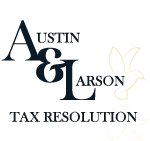When it comes to your tax return, accuracy is key. Mistakes can be costly, potentially resulting in a smaller refund, increased taxes, or even an audit from the IRS. To avoid these pitfalls, it’s crucial to take a proactive approach by ensuring your return is error-free. Double-checking your entries and seeking professional assistance can help you file your taxes accurately and avoid unnecessary financial consequences.

Common Mistakes in Filing Taxes
Navigating the intricate maze of tax laws can be daunting. With over 10 million words of U.S. tax statutes and IRS regulations as of 2015, it’s no wonder many individuals find themselves lost in the labyrinth of tax filing. However, amidst this complexity, the errors taxpayers commit are often straightforward. Let’s delve into the realm of tax filing mistakes, uncovering the top 10 blunders and providing actionable insights on how to sidestep them.
1. Neglecting fundamental steps.
Ensure the fundamentals are in place by double-checking your name and your dependents’ names for accuracy, along with verifying Social Security numbers. Select the appropriate filing status for your situation, as it can significantly impact your tax rates and benefits. For unmarried individuals, filing as single is an option, but you might qualify for better tax rates and perks if you qualify as head of household or qualifying widow(er) with a dependent child. Additionally, married couples might find it beneficial to file separately rather than jointly, depending on their circumstances. The IRS’s Interactive Tax Assistant on IRS.gov is a valuable resource for determining the correct status, especially in cases where multiple statuses may apply.
2. Failing to enter information accurately.
Ensure accurate reporting of your income by carefully entering wages, dividends, bank interest, and other earnings from forms like W-2s, 1099s, and K-1s. The IRS receives these same reports, and any discrepancies can trigger a review. If you believe there’s an error, contact the paying entity (e.g., your employer) for a corrected form.
3. Placing items on incorrect lines.
To avoid errors on your tax forms, it’s crucial to ensure that your entries are placed on the correct line. For instance, avoid placing your tax-free IRA rollover on a line intended for taxable IRA distributions. Utilizing tax software can help prevent this issue, but it’s always wise to double-check the placement of items on your final return before submitting. By taking this extra step, you can help ensure that your tax filings are accurate and free of mistakes.
4. Automatically opting for the standard deduction.
When it comes to tax deductions, many people automatically opt for the standard deduction without considering the potential benefits of itemizing. While itemizing does require more effort and documentation, it could actually save you more money in the long run.
Under the Tax Cuts and Jobs Act, the standard deduction nearly doubled in 2018, making it a more attractive option for many taxpayers. However, it’s still wise to run the numbers both ways to determine which method is most beneficial for your specific situation.
Fortunately, most tax software can automatically calculate whether you should itemize or take the standard deduction, taking the guesswork out of the equation. By taking the time to explore your options, you could potentially maximize your tax savings.
5. Failing to claim entitled write-offs.
Missing out on tax deductions can be a costly mistake. Some individuals avoid claiming certain deductions, fearing they might raise red flags with the IRS. For instance, there’s a misconception that taking a home office deduction increases the chances of an audit. However, the IRS has introduced a simplified deduction option for home offices, especially relevant with the rise of remote work. As long as you qualify for a deduction, it’s wise to take advantage of it. It’s important to note that the home office deduction is now limited to those who are self-employed.
6. Forgetting about the state healthcare mandate.
Did you miss out on factoring in your state healthcare individual mandate? While the federal mandate under the Affordable Care Act (ACA) was abolished in 2019, which means no more penalty fees for lacking qualifying health coverage, it’s crucial to note that several states have their own mandates in place. So, even though you’re in the clear federally, your state might have different requirements you need to adhere to.
Taking a closer look at the 2023 tax year, it’s important to recognize that six states alongside the District of Columbia have implemented their own individual health insurance mandates. These states include California, the District of Columbia, Massachusetts, New Jersey, Rhode Island, and Vermont. However, it’s worth mentioning that Vermont’s mandate doesn’t involve penalties for noncompliance. Therefore, whether you’re in the bustling streets of California or the serene landscapes of Vermont, understanding your state’s healthcare mandate is essential to avoid any surprises come tax time.
7. Overlooking typos.
Failing to thoroughly review your work for typos and errors can lead to significant issues. Simple mistakes, like swapping numbers or omitting digits, can distort the information you’re trying to convey. For instance, imagine contributing to your individual retirement account (IRA) but accidentally entering the wrong deduction amount on your tax return. This oversight could mean missing out on valuable deductions, ultimately resulting in higher taxes. Taking the time to review and double-check your work can help you avoid these costly errors.
8. Making errors in calculations.
Making errors in your math when filing taxes is a common mistake, as noted by the IRS. These errors can range from simple arithmetic mistakes to more complex calculations. It’s important to always double-check your math. Alternatively, consider using tax preparation software that can handle the calculations for you.
When entering a negative number, it’s crucial to follow the IRS instructions carefully. Some forms require you to use parentheses for negative numbers, while others use the minus symbol. This is to ensure that the IRS computers interpret the negative entry correctly. For instance, if you need to report a $500 loss on your return, enter it as ($500) on the appropriate line, rather than as -$500.
9. Not specifying your refund preferences to the IRS.
Ensure you take the reins when it comes to your tax refund. Instead of leaving it to chance, direct the IRS on what to do with your overpaid taxes. If you sit back and do nothing, expect a paper check in your mailbox from the U.S. Treasury.
To expedite the process, provide your bank account details—both the account number and routing number. This way, your refund seamlessly lands in your account without delays. Alternatively, consider diversifying your refund across up to three accounts for added flexibility.
Moreover, you have the option to allocate your refund towards next year’s estimated taxes. Another smart move is directing it into various retirement accounts, such as IRAs, to bolster your financial future. Additionally, you can invest in U.S. Treasury marketable securities like Series I savings bonds, enhancing your portfolio while awaiting future benefits.
10. Committing errors in tax payments.
Avoid payment mistakes by ensuring your tax payment is accurately credited. When submitting your payment, include Form 1040-V with your check if filing by paper or electronically. Utilize the government’s free payment sites (EFTPS.gov or Direct Pay) or pay by credit or debit card through an IRS-approved payment provider. Correct any errors on your return by filing Form 1040-X, Amended U.S. Individual Income Tax Return.

What is the Recommended Duration for Retaining My Tax Documents?
When it comes to retaining your tax returns, the IRS advises keeping them for a minimum of three years, but there are instances where holding onto them for longer is recommended. For example, if you claim a loss from worthless securities or bad debt deduction, it’s best to keep your records for seven years. Similarly, if you fail to report income that amounts to more than 25% of the gross income on your return, keeping your records for six years is prudent. If you don’t file a return or submit a fraudulent one, it’s advisable to keep your records indefinitely.

What Mistakes Do People Often Make When Filing Their Taxes?
Let’s delve into the often encountered blunders during tax filing. One prevalent error lies in the realm of Social Security numbers, either being absent or inaccurately inputted. Another hiccup stems from misspelled names, which might seem minor but can lead to major discrepancies. Another pitfall is selecting an incorrect filing status, a misstep that could potentially affect your tax obligations. Math errors also feature prominently, whether it’s simple addition and subtraction mistakes or the misuse of symbols like minus signs instead of parentheses for negative figures. And let’s not forget the significance of signing those forms – an unsigned tax return holds no weight, as per the stern stance of the IRS.

Which Is Better: Standard Deduction or Itemizing?
The standard deduction serves as a default tax deduction amount determined by the IRS. It’s a convenient option for many taxpayers, simplifying the filing process. However, for those with significant deductible expenses like mortgage interest, medical expenses, or charitable donations, itemizing could be the golden ticket to reducing your taxable income.
Let’s break it down further: Say you’ve incurred substantial medical bills, made sizeable charitable contributions, or paid hefty mortgage interest throughout the year. If these expenses exceed the standard deduction amount, itemizing allows you to claim them individually, potentially resulting in a lower tax bill or a larger refund.
The decision ultimately hinges on your specific financial circumstances. Take the time to gather all relevant receipts and documentation to determine which route is more advantageous for you. Remember, it’s not just about minimizing your tax liability but also about maximizing your potential savings. So, before you rush to claim the standard deduction, consider whether itemizing could put more money back in your pocket.
Conclusion
Tax filing mistakes can be costly, leading to smaller refunds, increased taxes, or even IRS audits. To avoid these pitfalls, accuracy is paramount. Double-checking entries and seeking professional assistance from Austin & Larson Tax Resolution, a full-service tax debt resolution company specializing in IRS tax debt issues, can help ensure error-free tax returns. It’s also essential to avoid common mistakes such as neglecting fundamental steps, inaccurately entering information, placing items on incorrect lines, automatically opting for the standard deduction, failing to claim entitled write-offs, forgetting about state healthcare mandates, overlooking typos, making errors in calculations, not specifying refund preferences to the IRS, and committing errors in tax payments.
Furthermore, when deciding between claiming the standard deduction or itemizing, consider your specific financial circumstances. If your itemizable expenses exceed the standard deduction amount, itemizing could significantly reduce your taxable income, potentially resulting in a lower tax bill or a larger refund. By taking a proactive approach, understanding common tax filing mistakes, and making informed decisions, you can file your taxes accurately and avoid unnecessary financial consequences.


Recent Comments